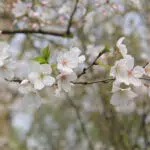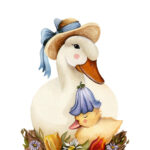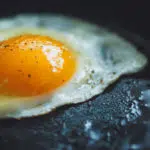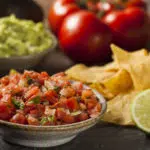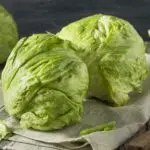Lei Day is celebrated on May 1. A lei is a beautiful string or necklace of flowers native to the tropics, notably the islands of Hawaii. Lei Day honors a popular custom of presenting visitors with leis as soon as they arrive. A distinct variety of lei represents each island. The pink lokilani rose is the name of Maui’s lei. Whether you’ve visited the Pacific’s crown gem or not, Lei Day is a chance to daydream about the islands and plan a trip (or a return!) to the islands’ beautiful green coastlines. Big events mark the festivities across the islands including, as always, food and live music!
History of Lei Day
Many believe that what Mark Twain wrote about the islands, as published in a San Francisco newspaper in 1866, was the beginning of Hawaii’s tourism industry. As steamships began to transport visitors across the Pacific, lei merchants would position themselves at Aloha Tower, selling leis to incoming guests at the boat dock. Since then, leis have become an essential element of every Hawaiian visit. This holiday brings attention to the finer elements of the custom the casual tourist would otherwise overlook.The lei has played a major role in the native Hawaiian people’s history and culture. Anyone who has visited the islands or seen photographs of them knows that they are lush, rich playgrounds filled with vibrant color creating a “symphony” of calm and pleasure. From the vivid red lehua blossom on the Big Island to the bright yellow Kauna’o flower on Lanai, each island has a flower that represents it.Lei Day was established in 1929, but celebrations began two years earlier, in 1927, at the Bank of Hawaii, and subsequently moved to Kapi’olani Park. The day has its own distinctive style, with celebrations (often contentiously) highlighting the diverse cultures that have come to call the islands home. Everything from musical traditions to dancing forms has been combined to produce an incredible hybrid culture that is 100% Hawaiian.Concerns have been raised, however, that the merging of cultures across the islands may result in the loss of Hawaiian cultural identity as generations pass, as well as a reduction in ethnic values. By appreciating Hawaiian culture and presenting it to others, Lei Day straddles the line of this contradiction.
Lei Day timeline
Mark Twain’s account of his experience in the islands for a Sacramento Union newspaper kick-starts Hawaii’s travel and tourism industry.
The first celebration of this day is held at the Bank of Hawaii, spreading to the town hall, and lastly to Kapi’olani Park.
Lei Day is declared a national holiday.
The first beauty pageant is held, where a “Lei Day Queen” is chosen, along with a princess representing each of the islands.
Lei Day FAQs
How does one give or present a lei?
In Hawaii, a lei is traditionally placed around a visitor’s neck as he or she plants a kiss on the welcomer’s cheek. It may be presented by bowing slightly as the welcomer holds the lei to his or her chest encouraging the visitor to take the lei and place it around his or her neck.
Who first proposed the idea of Lei Day?
Don Blading, the writer and poet of the Honolulu Star-Bulletin, first proposed the idea in his book “Hula Moons.” He introduced the holiday in his column on February 13, 1928.
Do leis have different meanings?
Maile ti leaf leis are signs of appreciation, respect, and admiration. These are usually given as gifts for graduations, anniversaries, and weddings. Red, brown, and orange ilima flower leis are symbols of love. A yellow lei symbolizes good luck and new beginnings.
Lei Day Activities
-
Give leis as gifts
On Lei Day, give leis as gifts to your friends and family. This gesture especially honors the Hawaiian culture, or the aloha spirit, which means the giving of warmth and affection to others without expecting anything in return.
-
Participate in the festival
Take part in Lei Day festivities, which include parades and ceremonies, as well as festivals. Many schools participate in these festivities. The Hawaiian lei is celebrated in a variety of ways in Honolulu. One of the events, for example, involves islanders sharing their lei-making skills.
-
Watch a beauty pageant
Watch young women vie for the title “Lei Day Queen.” It is similar to the Miss America pageant.
5 Facts About The Hawaiian Lei
-
Leis were signs of love for gods
In the olden days, leis were exchanged as presents or regarded as symbols of love and respect for the Hawaiian gods.
-
Lei greeting
When ships brought hundreds of visitors to the islands for the first time in the late 1800s and early 1900s, the custom of welcoming them with leis was born.
-
Teeth and bones were used as ornaments
Teeth, bones, sticks, and kukui nuts were strung together as body ornaments of ancient Hawaiians.
-
Some leis are not real flowers
Most leis look like fresh flowers but are actually made of polyester, color-fast materials.
-
It’s impolite to remove a lei immediately
Removing a lei in front of the person who gave it to you is considered impolite.
Why We Love Lei Day
-
It celebrates old customs
It celebrates the centuries-old Hawaiian tradition of crafting, presenting, and wearing a lei. Leis can include lacy ferns, glittering ti leaves, polished kukui nuts, feathers, seeds, and delicate shells. They are most commonly weaved or embroidered with flowers these days.
-
It speaks of one’s kindness and hospitality
The holiday reminds people to be kind and hospitable to friends and guests. It is also a charming gesture of sharing what they have.
-
It brings people together
It represents an enjoyable part of Hawaiian culture. It paves the way for better cultural awareness and brings people together.
Lei Day dates
| Year | Date | Day |
|---|---|---|
| 2023 | May 1 | Monday |
| 2024 | May 1 | Wednesday |
| 2025 | May 1 | Thursday |
| 2026 | May 1 | Friday |
| 2027 | May 1 | Saturday |




